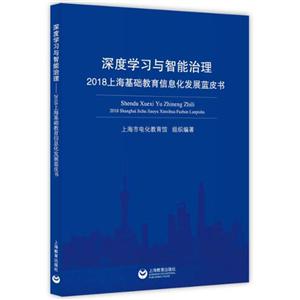人称范畴/语言学范畴研究丛书

|
人称范畴/语言学范畴研究丛书作者:(英)安娜·谢维尔斯卡 开 本:16 书号ISBN:9787301146163 定价:38.0 出版时间:2008-12-01 出版社:北京大学出版社 |
人称范畴/语言学范畴研究丛书 本书特色
《人称范畴》是迄今为止**部全面系统的研究人称范畴的著作,通过对七百多种语言中**、二、三人称词作跨语言调查,作者比较其不同的表现,并发现不同的表现背后的原因。他还研究了人称词形式在语言中的使用情况,人称词之间的语义区别的性质,在句子和篇章中怎样使用及其不同的社会意义。通过调查人称形式的不同语法和其使用的语境,《人称范畴》鲜明反对了从形态和句法性质等任意性角度对人称词进行的研究。
人称范畴/语言学范畴研究丛书 内容简介
简介 人称在语言学上指表示言谈角色的语法范畴,本书可以说是语种基础*为广泛、探讨*为全面深入的一部专著。它以包含700多种语言的语种库为材料基础,很多结论都是在对这些语言的穷尽性观察和统计的基础上得出的,这提高了相关结论的可信性。本书无论是对人称范畴的语言比较还是单一语言的研究,都具有很高的参考价值。就国内而言,它对研究中国境内众多方言纷繁复杂的人称。现象及其历史演化都会有直接的帮助。
人称范畴/语言学范畴研究丛书 目录
List of figuresList of tablesPrefaceList of abbreviations1 Introduction1.1 Person as a grammatical category1.1.1 Person paradigms1.1.2 First and second persons vs third person1.2 The universality of person markers1.3 The nature of this book2 The typology of person forms2.1 Morpho-phonological form2.1.1 Independent forms2.1.2 Dependent person markers2.2 Syntactic function2.2.1 Syntactic function and morpho-phonological form2.2.2 The encoding of syntactic function2.3 Discourse function3 The structure of person paradigms3.1 Fewer than three persons3.2 Variation with respect to number3.2.1 More than one person and the inclusive/exclusive distinction3.2.2 Duals and larger numbers3.2.3 Number and the person hierarchy3.2.4 Towards a typology of paradigmatic structure3.3 Variation in gender3.3.1 Gender and the person hierarchy3.3.2 Gender and number3.3.3 Gender and the inclusive/exclusive distinction3.4 Differences between paradigms3.4.1 Independent w dependent paradigms3.4.2 Differences between dependent forms4 Person agreement4.1 Anaphoric pronoun vs person agreement marker4.2 The targets of person agreement4.2.1 Predicates4.2.2 Possessed nouns4.2.3 Adpositions and other targets4.3 The controllers of person agreement4.3.1 The person hierarchy4.3.2 The nominal hierarchy4.3.3 The animacy hierarchy4.3.4 The referential hierarchy4.3.5 The focus hierarchy4.4 The markers of person agreement4.4.1 Person agreement and morpho-phonological form4.4.2 The location of person markers5 The function of person forms5.1 Cognitive discourse analysis and referent accessibility5.2 Referent accessibility and the distribution of person forms in discourse5.2.1 Entity saliency5.2.2 Unity5.3 Accessibility and the intra-sentential distribution of person forms5.3.1 Chomsky's Binding Theory5.3.2 Referent accessibility and BT5.3.3 The avoid pronoun constraint5.4 Beyond referent accessibility5.4.1 Long-distance reflexives, logophoricity and point of view5.4.2 Person marker vs other referential expression and speaker empathy5.5 Person markers and impersonalization6 Person forms and social deixis6.1 Alternation in semantic categories6.1.1 Variation in number6.1.2 Variation in person6.1.3 The use of reflexives6.2 Special honorific person markers6.3 Omission of person markers7 Person forms in a diachronic perspective7.1 The sources of person markers7.1.1 Lexical sources7.1.2 Demonstratives7.1.3 Other person markers7.1.4 Conjugated verbal forms7.1.5 Other grammatical markers7.2 From independent person marker to syntactic agreement marker7.2.1 Three accounts of the early stages of the grammaticalization of person markers7.2.2 Syntactic agreement markers7.3 Language externally driven changes in person marking7.3.1 Borrowing of person markers7.3.2 Loss of person agreementAppendix 1. List of languages in the sample by macro-areaAppendix 2. Genetic classification of languages cited in the textReferencesAuthor indexLanguage indexSubject index
社会科学 语言文字
在线阅读
- 最新内容
- 相关内容
- 网友推荐
- 图文推荐
零零教育社区:论坛热帖子
| [高考] 2022 西安电子科技大学《软件工程》大作业答案 (2022-04-25) |
| [家长教育] 孩子为什么会和父母感情疏离? (2019-07-14) |
| [教师分享] 给远方姐姐的一封信 (2018-11-07) |
| [教师分享] 伸缩门 (2018-11-07) |
| [教师分享] 回家乡 (2018-11-07) |
| [教师分享] 是风味也是人间 (2018-11-07) |
| [教师分享] 一句格言的启示 (2018-11-07) |
| [教师分享] 无规矩不成方圆 (2018-11-07) |
| [教师分享] 第十届全国教育名家论坛有感(二) (2018-11-07) |
| [教师分享] 贪玩的小狗 (2018-11-07) |






